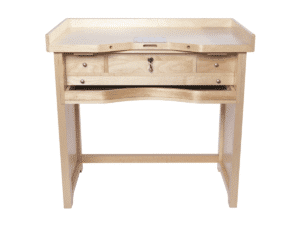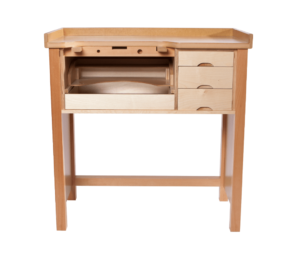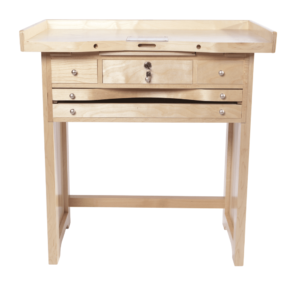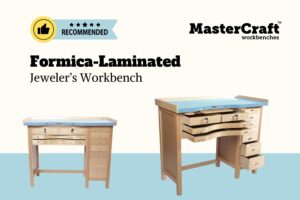Jewelry-making is an ancient craft that intertwines artistry, precision, and passion. Jewelers are more than artisans—they are storytellers, expressing emotion, history, and creativity through metal, gemstones, and design. Whether you’re an experienced jeweler or just starting in the field, there are key aspects of the craft that set true masters apart. This post explores essential techniques, tools, trends, and tips that every jeweler should embrace to elevate their craft.
Precision in Design: The Blueprint of Great Jewelry
The foundation of any masterpiece starts with the design. As a jeweler, sketching is more than a simple draft—it’s where your creativity comes to life. Your sketches should not only capture the visual concept but also consider the technicalities of structure, symmetry, and proportion.
Tips for Successful Design:
- Balance Creativity with Functionality: Always consider how the piece will be worn. For example, an elaborate necklace might look stunning in the sketch but could be uncomfortable if it’s too heavy or intricate.
- Experiment with Different Forms: Stay inspired by exploring non-traditional shapes, asymmetry, or innovative uses of negative space.
- Digital Design Tools: Modern software like CAD (Computer-Aided Design) has revolutionized the field. With CAD, jewelers can create precise 3D renderings, making it easier to visualize and modify designs before committing to production.
Mastering Traditional Techniques
While technology plays a role in modern jewelry-making, many of the finest pieces are still created using time-honored techniques. Mastery of these traditional methods ensures that your jewelry not only stands out aesthetically but also lasts for generations.
Essential Techniques Every Jeweler Should Know:
- Lost Wax Casting: This ancient technique allows for intricate detail and versatility in design. Once the wax model is created, it can be melted away to leave a mold for casting metals.
- Stone Setting: From bezel and prong settings to more advanced styles like pave and tension settings, stone setting requires dexterity and an eye for perfection. Every gem deserves a secure, precise home in the design.
- Engraving and Enameling: Add fine details to your work by mastering these decorative techniques. Engraving can personalize a piece, while enameling brings color and vibrancy.
- Soldering and Polishing: Creating strong joins and a flawless finish are fundamental to achieving a professional look. These are critical skills that should be refined over time.
Tools of the Trade: Quality Matters
A jeweler’s tools are an extension of their craftsmanship. Investing in high-quality tools not only makes your job easier but also ensures that your work is of the highest standard.
Must-Have Tools for Every Jeweler:
- Precision Tweezers: These are essential for stone setting and handling tiny elements.
- Rolling Mill: For thinning and texturizing metals, a rolling mill is a vital tool for creating custom sheets or wires.
- Magnification Tools: A jeweler’s loupe or microscope ensures accuracy, especially when working with small stones or details.
- Soldering Kit: A reliable soldering kit allows you to seamlessly join pieces of metal, a key technique in jewelry assembly.
The Importance of Sourcing Materials Ethically
Today’s customers are more aware of the ethical concerns surrounding materials, particularly diamonds and precious metals. As jewelers, it’s our responsibility to ensure that our craft supports ethical sourcing and sustainability.
Ethical Considerations for Jewelers:
- Fair-Trade Metals and Stones: Partnering with suppliers who follow fair-trade practices ensures that your materials are responsibly sourced, benefiting both the environment and the communities that mine them.
- Lab-Grown Gemstones: Lab-grown gems are becoming increasingly popular, offering an eco-friendly and often more affordable alternative to traditionally mined stones.
- Recycled Metals: Using recycled gold, silver, and platinum reduces environmental impact and appeals to eco-conscious consumers.
Trends in Jewelry Design: Stay Ahead of the Curve
While classic pieces remain timeless, staying on top of modern trends helps keep your work relevant and in demand. Contemporary jewelry design is often influenced by fashion, technology, and cultural shifts.
Current Trends to Incorporate into Your Work:
- Sculptural Jewelry: Bold, sculptural designs that stand out as art pieces are gaining popularity. Think oversized earrings, chunky rings, and statement necklaces.
- Personalized Jewelry: Customers are increasingly looking for custom pieces that reflect their personality or story, whether through engravings, birthstones, or bespoke designs.
- Sustainable Jewelry: Eco-friendly materials and upcycled designs are not just a trend—they are becoming a core value for modern consumers. Embrace green practices to attract this growing market.
Marketing Your Craft: Building a Strong Brand
In the digital age, a jeweler’s success is not only defined by skill but also by how well they market their craft. Social media, e-commerce, and branding are key components of a successful jewelry business.
Marketing Tips for Jewelers:
- Build a Strong Online Presence: Platforms like Instagram and Pinterest are great for showcasing your work. High-quality images and storytelling will help you connect with your audience.
- Customer Testimonials and Reviews: Word of mouth is a powerful tool. Encourage satisfied customers to leave reviews or share their experiences.
- Offer Customization: By offering personalized jewelry or made-to-order options, you can cater to individual tastes and needs, creating a unique customer experience.
- Create an E-Commerce Store: With more people shopping online, having an accessible and professional website can boost your sales. Consider using platforms like Etsy, Shopify, or creating a dedicated website.
Conclusion: Crafting Your Legacy as a Jeweler
Jewelry-making is an art that blends creativity with meticulous craftsmanship. Whether you’re perfecting a classic solitaire or designing an avant-garde piece, attention to detail, quality materials, and an eye for design are crucial. By mastering both traditional techniques and embracing modern trends, you not only create beautiful jewelry but also build a lasting brand.
Remember, each piece you create reflects your passion and skill. Take pride in every stage of your craft, from concept to completion. Happy crafting!
Need some inspiration? Check out other blog posts!
Browse Jeweler's Workbenches

Featured

Small Workbenches

Small Workbenches

Small Workbenches





